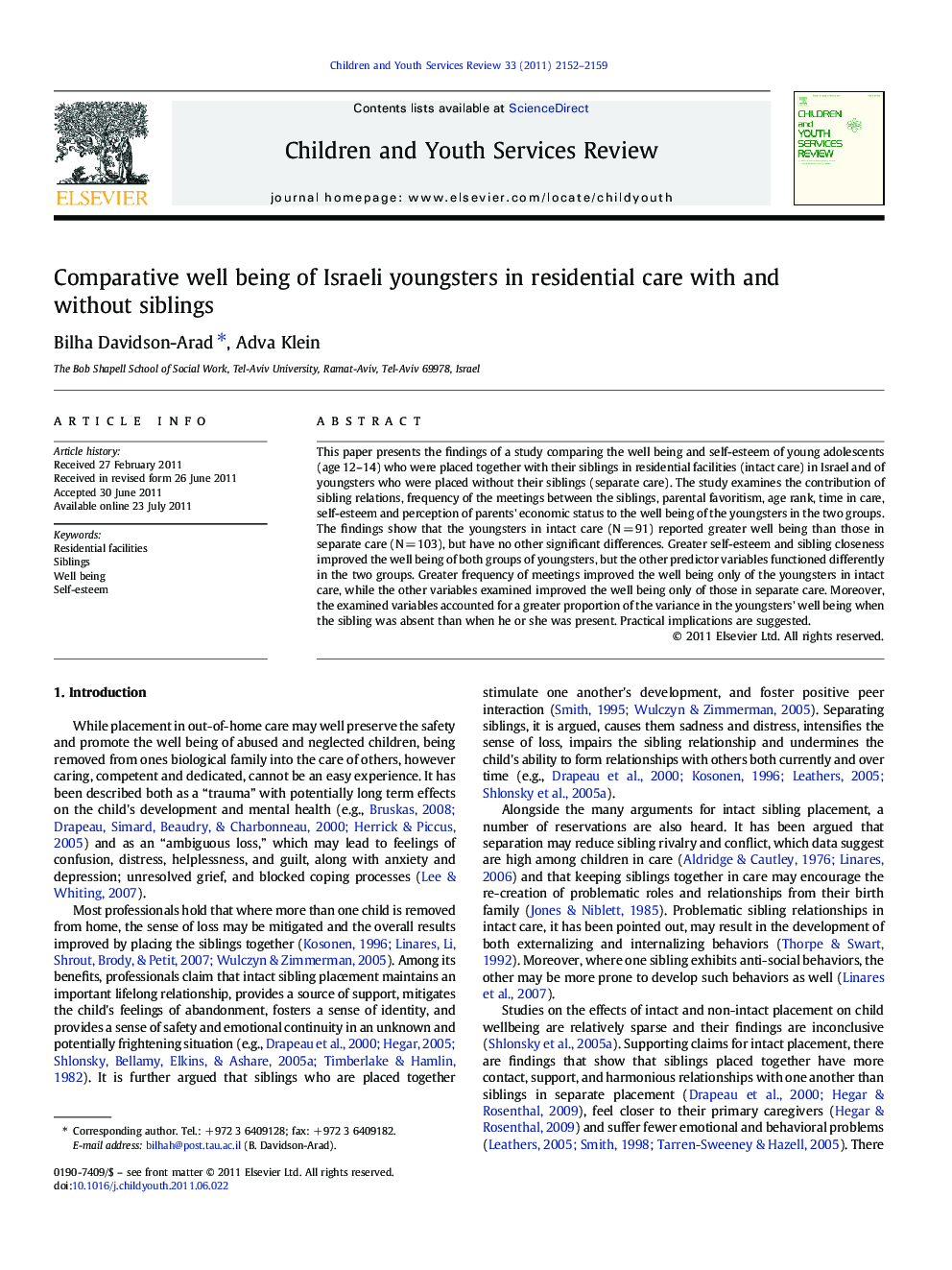| Article ID | Journal | Published Year | Pages | File Type |
|---|---|---|---|---|
| 346215 | Children and Youth Services Review | 2011 | 8 Pages |
This paper presents the findings of a study comparing the well being and self-esteem of young adolescents (age 12–14) who were placed together with their siblings in residential facilities (intact care) in Israel and of youngsters who were placed without their siblings (separate care). The study examines the contribution of sibling relations, frequency of the meetings between the siblings, parental favoritism, age rank, time in care, self-esteem and perception of parents' economic status to the well being of the youngsters in the two groups. The findings show that the youngsters in intact care (N = 91) reported greater well being than those in separate care (N = 103), but have no other significant differences. Greater self-esteem and sibling closeness improved the well being of both groups of youngsters, but the other predictor variables functioned differently in the two groups. Greater frequency of meetings improved the well being only of the youngsters in intact care, while the other variables examined improved the well being only of those in separate care. Moreover, the examined variables accounted for a greater proportion of the variance in the youngsters' well being when the sibling was absent than when he or she was present. Practical implications are suggested.
► We compare adolescents placed with siblings in residential facilities to youngsters placed without their siblings. ► Youngsters in intact care reported greater well being than those in separate care. ► Greater self-esteem and sibling closeness improved the well being of both groups. ► Greater frequency of meetings improved the well being of the youngsters in intact care. ► Other variables improved the well being of those in separate care.
